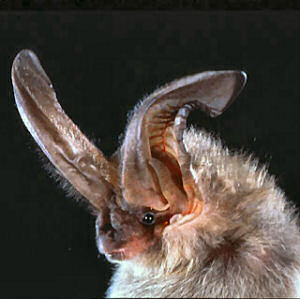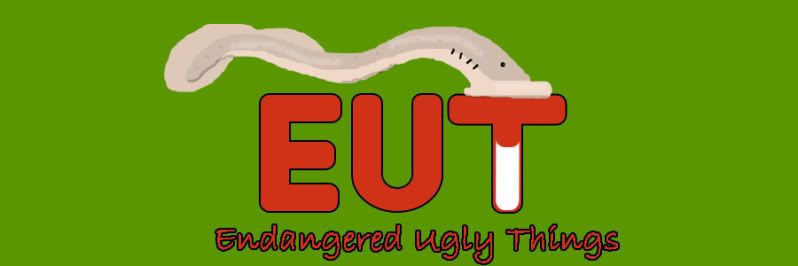 |
| Image from Bat Conservation International |
Those glands on the Virginia Big-Eared Bat (Corynorhinus townsendii virginianus) probably emit pheromones. Nothing quite like natural perfume sacs right next to your nose (it’s amazingly difficult to definitely determine this sort of thing). Like many other bats, they are nocturnal insectivores, feeding mostly on moths. Unlike most bats, they’re late sleepers1, as they leave the cave about an hour after dark instead of an hour before. Since they fly fairly slowly, they’ve got their share of predators, including barn owls, and the less native feral housecat.
Big-eared bats mate in the fall and early winter. Since bats in temperate habitats tend to hibernate all winter, this might not seem like a good idea. But fear not, dear reader, for the female big-ear has a trick up her… sleeve. She is able to keep the sperm through the winter, ovulate in the spring, and have the baby (well, pup, actually) in early summer, when all the juiciest moths are out and getting in people’s campsites.
Not only are the big-ears late sleepers, they're also light sleepers in the winter. When the bats are hibernating, disturbances cause them to wake up, shift around, and lose valuable energy for managing their way through the winter2. Thus, spelunking and other caving activities are potentially dangerous to these bats. Intrusions during other times of the year can directly affect young, or drive the bats to look for a new home.
To keep these occurrences at a minimum, gates or fences have been placed around the colonies by concerned government employees. Studies on big-ears’ favorite roosting places are being conducted to see what else we can do to study them. And, on the political front, in 2005, the Virginia Big-Eared Bat was chosen to honorably represent the Commonwealth of Virginia as the Official State Bat.
1Like many college students.
2Also like many college students.

2 comments:
Your fine for putting THESE ugly suckers (hehe) up on here. Good for you. I guess my spelunking days are over, I don't wana harm these little critters. gee golly.
I tried, bit I just can't find this bat ugly. The goofiness factor outweighs ugly. But don't worry--there's plenty of ugly on your blog to make up for it.
Post a Comment